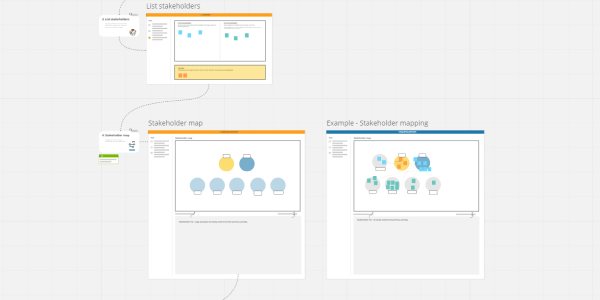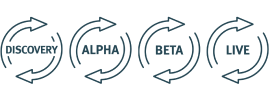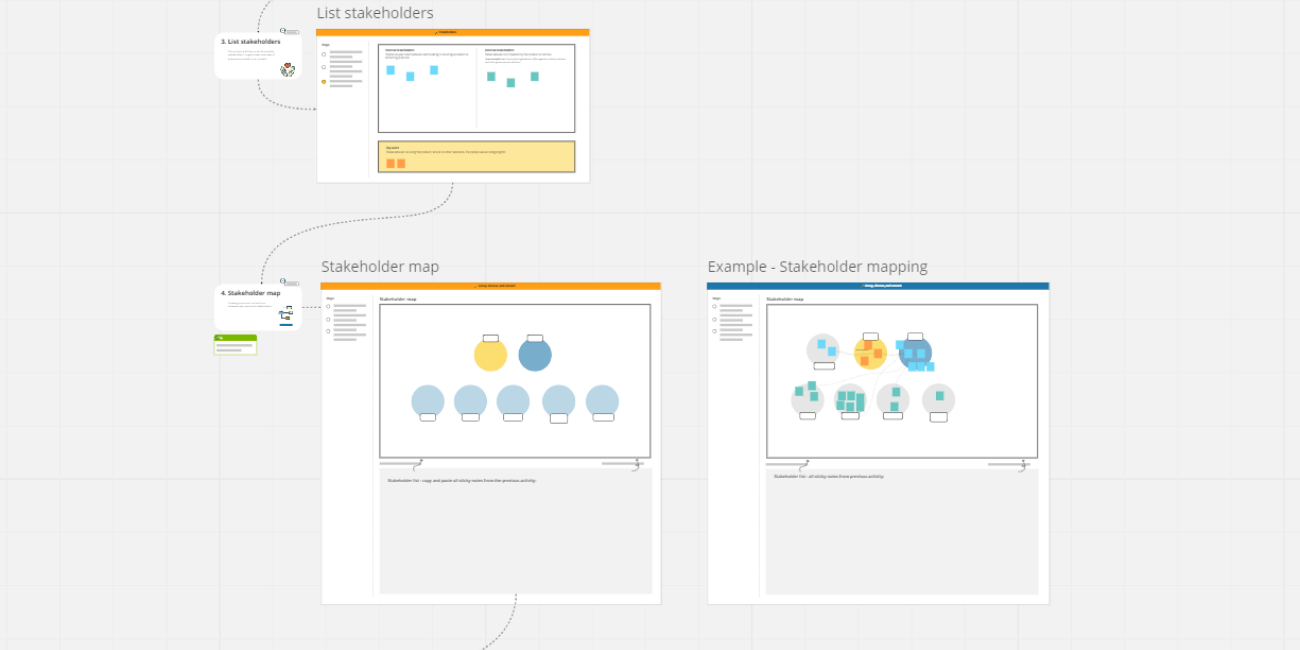Stakeholder mapping
Stakeholder mapping helps you reflect as a team to identify stakeholders, their roles, and the relationships between them in order to communicate and work with them more effectively. Use this play as early as possible to make sure your team have a clear understanding of who is relevant to any given piece of work.
What is a stakeholder map?
A stakeholder map is a visual representation of the ecosystem of stakeholders involved in a user experience. It helps to understand who is involved, to reveal existing formal and informal relationships between stakeholders, to identify frictions between them, and to find new business opportunities by establishing new relationships, fostering existing ones, or creating alternatives.
Why do I need a stakeholder map?
Stakeholder maps can be used to analyse and understand who is involved in a project or organisation, and how these people, organisations and aspects are connected. Most projects are influenced by a large number of different stakeholders. Understanding their perspectives and how they are connected can help to better manage the different expectations and ensure you include the relevant stakeholders at appropriate stages of your project. A stakeholder map is also often the first step towards defining and clarifying who your key users are for a project.

Outcomes
A visual map of:
- stakeholders involved in, and impacted by our project
- key users defined for our project (who we are designing for)
- the relationships between the stakeholders and key users
- A starting point that will help us form a RACI and communications plan
The stages

The four stages of the Service design and delivery process are Discovery, Alpha, Beta, and Live.
Digital service standard
This play helps your service meet the following criteria of the digital service standard.
Share your feedback
Take our short feedback survey and tell us what you thought of this play, or report an issue.
This playbook is a beta product, your feedback helps us improve it for everyone.
Contact us
If you need advice, mentoring, or guidance on how to use the playbook, or you’d like to contribute to the playbook, you can contact us.
